Many different influences and builders shaped the image of ancient Rome. The Etruscans and Greeks brought their culture, architecture and philosophy to the city on the Tiber. And the conquered territories paid the necessary tribute to fund the city.
City founded for political reasons
"Seven-five-three:Rome crept out of an egg" is the mnemonic from history class. The founding date is 753 BC. However, archaeological research shows that the first settlements were built on two of Rome's seven hills as early as the 10th century BC.
First on the Palatine and the Esquiline. The area in between is swampy. 200 years later another hill is built on:the Capitol. From the accumulation of poor peasant huts, a small, walled town finally developed by the middle of the 8th century BC.
However, the development of the city is not, as the legend says, due to Romulus. He probably plays no role as the first Roman ruler. It is the Etruscans who rule over central Italy at this time and develop Rome into the strategic center of central Italy. They design the city according to their own and Greek models.
The Etruscan rulers built the so-called "Cloaca maxima", a sewage system to drain the swamp area between the hills and at this time they were already laying out the main square of the city, which later became the Roman Forum. It becomes the place of sanctuaries, assemblies and justice.
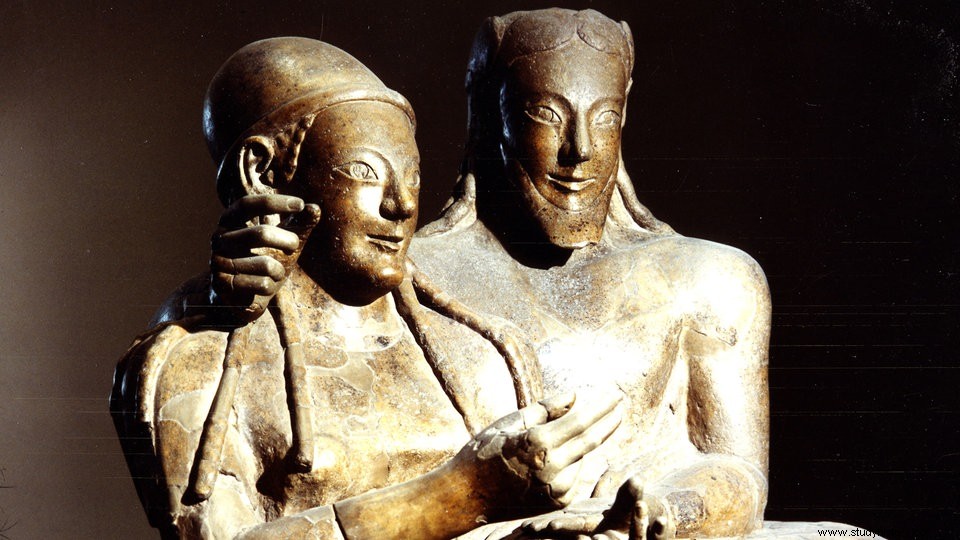
Civilization before the Romans:The Etruscans
Center of the Roman Empire
In the centuries to come, urban development will not be determined by flourishing handicrafts and trade, as is the case elsewhere, but by politics. Rome is a largely representative city, funded by spoils of war and tributes.
This did not change with the expulsion of the last Etruscan king, Tarquinius Superbus, around 510 BC. Rome now becomes a republic:consulate, senate and popular assemblies determine politics for centuries.
Through a systematic policy of expansion, more and more areas in Italy are being subdued. The city of Rome is the political, social and cultural center of an ever-growing Roman Empire.
For the expansion of the metropolis, however, the funds continue to flow from the subjugated areas. In 433 BC the Apollo temple was built on the Field of Mars and the Circus Maximus below the Palatine, initially as a large meadow framed by wooden stands.
The road network is expanded:the Via Sacra, on which the dead were buried until then, is continued to the Roman Forum and ends at the Capitol. As an axis, it now connects the most important city centers.
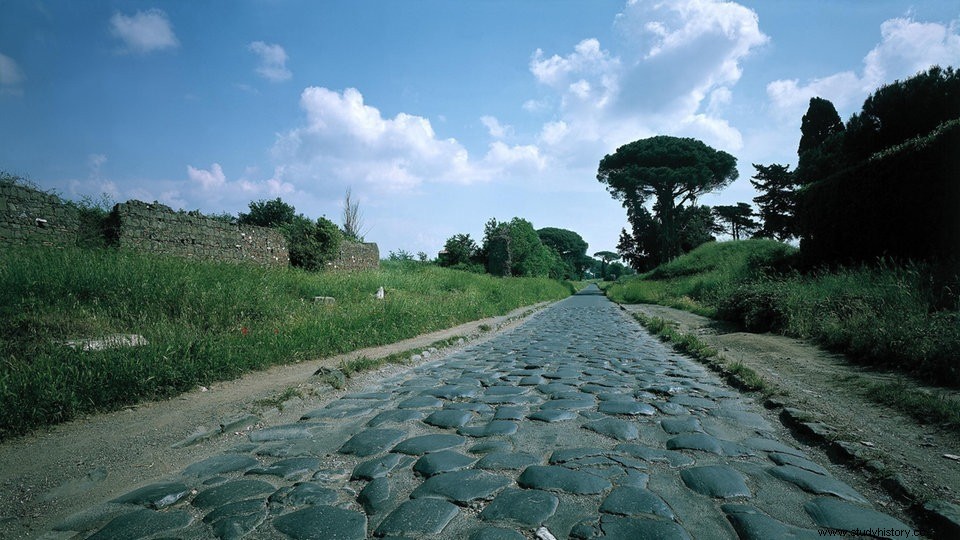
The most important long-distance road in Roman antiquity:Via Appia
The Roman Forum becomes the focal point of the star-shaped arterial roads. The most famous, the Via Appia, leads in a southeasterly direction to present-day Apulia. The first aqueduct, 17 kilometers long, was built in 312 BC. A large part of the population is no longer supplied with the polluted water of the Tiber, but with fresh spring water.
There is no uniform Roman cityscape, it is constantly changing. The city is constantly being renovated, old buildings are being demolished or simply built over. The "eternal city" was subject to constant modernization in antiquity.
Roads, bridges, ports and art theft
Around 270 BC, Rome's political and economic importance grew steadily. This is reflected in the construction of new plants and buildings. The Temple of Juno Moneta with a coin minting workshop is built on the Capitol.
Dirt roads are being paved and bridges are being built across the Tiber. Market halls are built. A state archive, the so-called Tabularium, is created in the Roman Forum. A trading port will be developed at the Forum Boarium and a war port at the Field of Mars.
Representative buildings are built by Greek architects, such as the first marble temple dedicated to the gods Jupiter Stator and Juno Regina.
Since the local marble has not yet been discovered near Carrara, the noble material is imported by sea from conquered Greece. On this occasion, a number of Greek works of art are deported to Rome. Even the original columns of Olympion were stolen from Athens to rebuild the burned-out Jupiter temple on the Capitol.
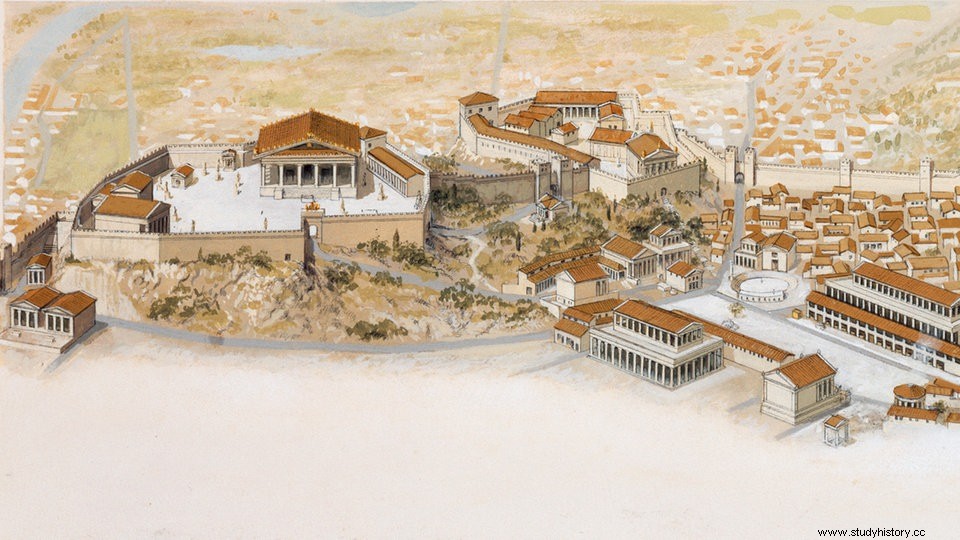
Reconstruction of the Capitol with Temple of Jupiter
Tensile barracks, functional and magnificent buildings
With the conquests in Greece and Asia Minor, the city grew rapidly around 200 BC. The first tenements are built. A hundred years later, sanitary and traffic problems are already plaguing the city. There are also fires, famines, flooding of the Tiber and housing shortages. Construction and rental speculation worsen the situation.
In the middle of the first century BC, the Roman Emperor Caesar tried to solve the problems with laws. Paving, repairing and cleaning of the streets are regulated. The food supply is prescribed in a socially just way. Low rents are canceled for a year, rents are generally reduced.
The glorification of one's own person is not neglected with so much social commitment. Generals such as Sulla, Pompeius and Caesar have their glorious deeds immortalized in representative magnificent buildings.
For example, Caesar had a large area bought up next to the Roman Forum in order to build his Forum Julianum there. These so-called imperial forums become a tradition. The Forum of Trajan, which was completed as the last imperial forum in 143 AD, appears to be the most magnificent.
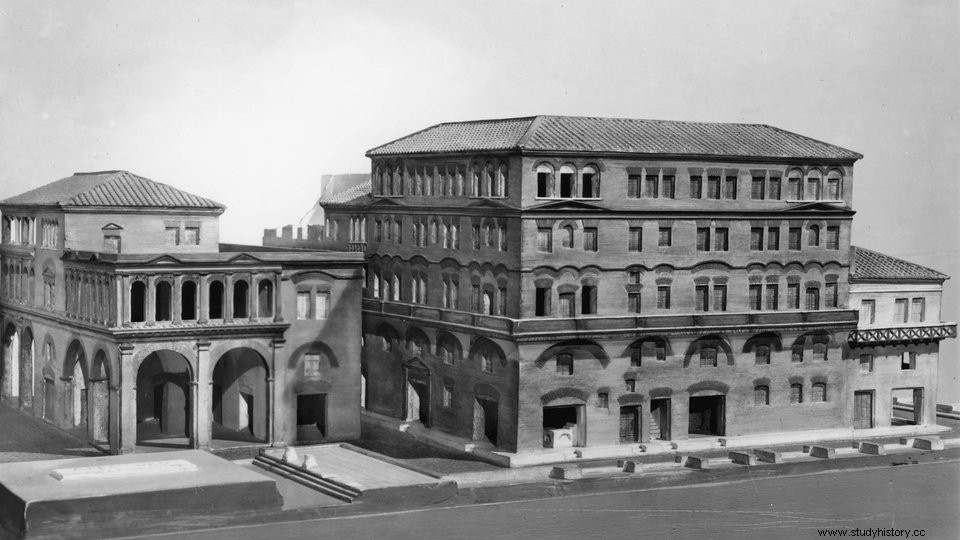
Roman tenement from the first century AD
Urban redevelopment in the style of Caesar
During the reign of Emperor Augustus between 31 BC and 14 AD the city is supposed to get a new face. The emperor reforms the administration of the city by dividing it into 14 districts.
A professional fire brigade is set up and a security force of several thousand men. The Tiber is regulated to prevent the risk of flooding.
Sanitary conditions are improved:the first public, heated thermal baths are built. Public libraries are set up for intellectual education. The building height of the tenements is limited to 20 meters. Livestock for slaughter may only be driven through the streets at night to avoid traffic jams.
Private vehicle traffic is also prohibited during the day. Only building material for public buildings may be transported. The Circus Maximus is expanded in the first century AD. Now it offers space for around 250,000 spectators to watch horse and chariot races. From 80 AD gladiator fights can be followed in the Colosseum with around 50,000 seats.
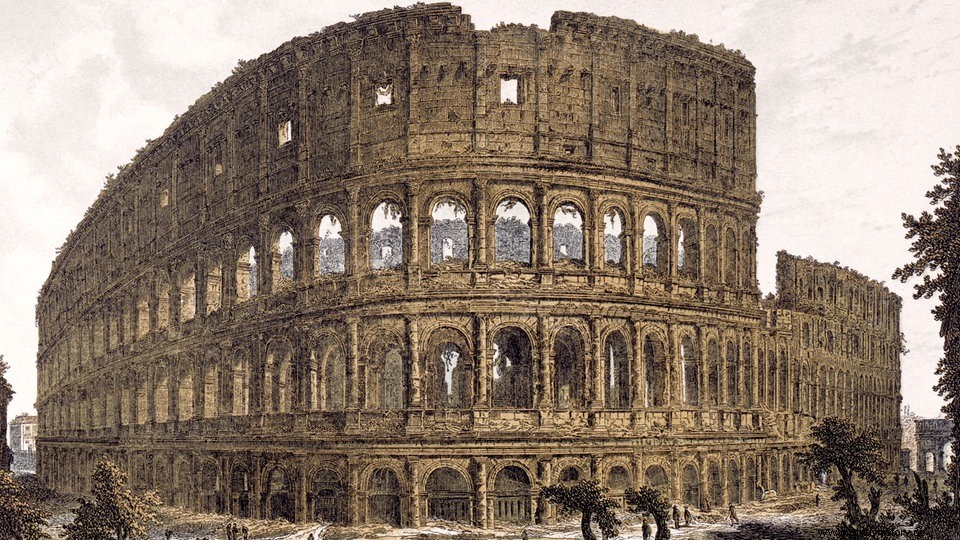
Magnificent work of Roman concrete
Emperor Augustus boasts that he found a city of mud bricks but left one of marble. In fact, he has 82 existing temples restored and clad in marble, but most of the structure is still wooden, according to the Roman historian Publius Cornelius Tacitus. The advantage:wood is easy to obtain, transport and process.
The disadvantage:wood burns quickly and the fires spread quickly. In fact:The tenements are only built of stone on the lower floors, with a connection to the water and sewage system. For static reasons, the upper floors are built in light timber construction. You live in constant danger of fire.
No wonder Nero is rumored to have set fire to Rome so easily in AD 64. The city was on fire for six days. Of the 14 districts, three are completely destroyed and seven are burnt down.
His supposed ulterior motive:he wants to redesign the city according to his own plans and thereby ensure more security. In fact, he orders the widening of the streets, prescribes the use of fireproof building materials and the observance of house distances.
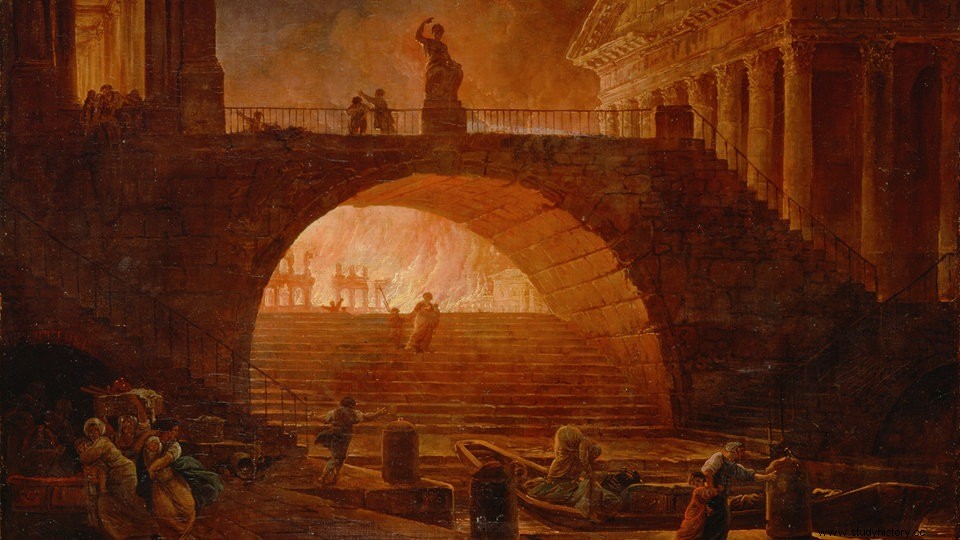
Rome on fire in AD 64
Inventory of public institutions
In the time of Emperor Constantine, from 306 to 337 AD, Rome reached its greatest extent. There are eleven aqueducts with a daily capacity of more than one million cubic meters of water. With around one million inhabitants, this is a daily per capita consumption of more than 1000 liters:used for 1352 public water points, 856 small pools and eleven thermal baths.
There are 254 industrial bakeries, 290 warehouses, 1,790 private residences, 46,602 tenements, eight grand squares, eleven forums, eight bridges, 190 granaries, 254 mills, 28 public libraries, 22 circuses, two amphitheaters, three theaters, 36 triumphal arches, and 46 brothels.
But Rome no longer has the political importance it had in the days of Emperor Augustus. The decadence of the upper classes, domestic power struggles and numerous selfish or weak emperors have run down the city. At the latest when Emperor Constantine moved his residence to Constantinople, today's Istanbul, in the year 330, the decline of the ancient world metropolis began.
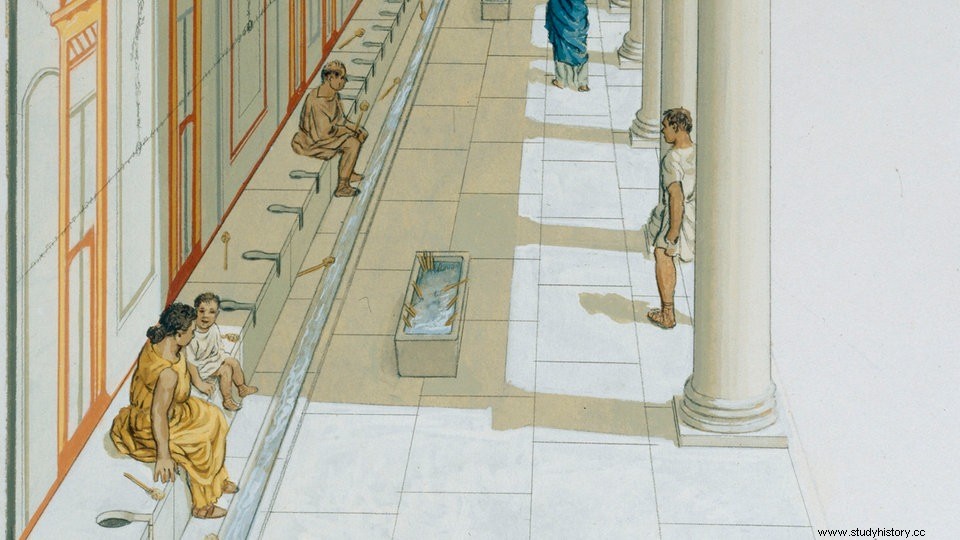
Public latrine on the edge of the forum
